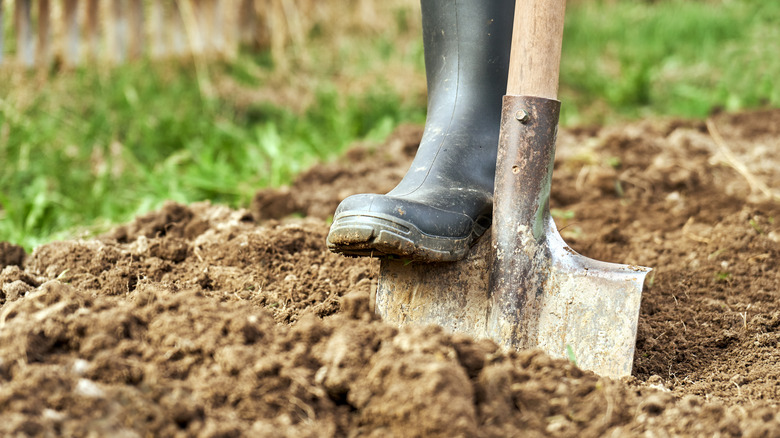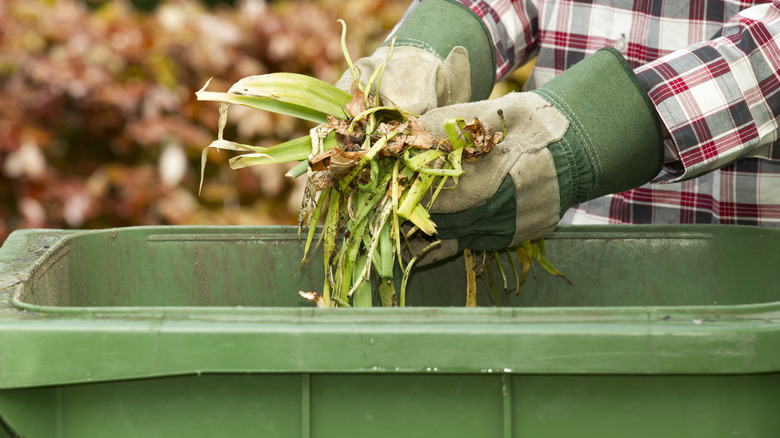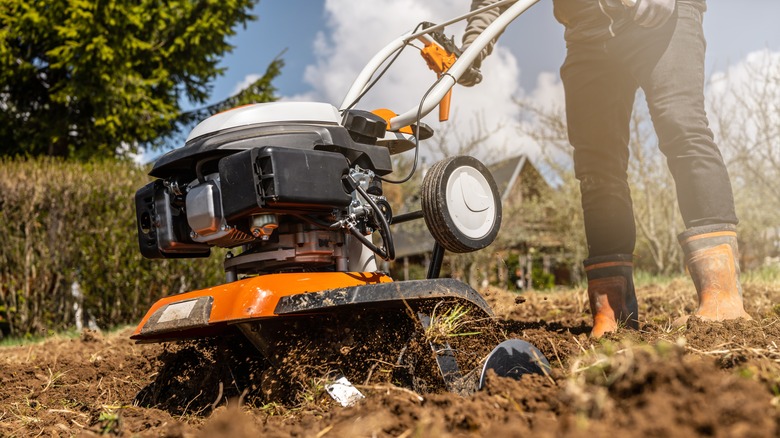Easily Break Up Clay Soil With These Helpful Gardening Tips
Do you have aspirations of becoming an avid gardener, but the clay soil in your backyard is putting a damper on your dreams? Clay soil is notoriously hard to work with — it's tough on both gardeners and plants. It's compact and hard when it's dry, and sticky and heavy when it's wet, making it difficult to shovel in any weather conditions. And because it's so dense, it's also hard for plants to flourish in clay soil. Their roots have a challenging time absorbing water and air through the thick mass, which can sometimes lead to suffocation. Because of this, gardeners who want to grow vegetable patches or cultivate floral landscaping sometimes decide to skip the clay soil altogether and start a raised bed garden instead. But if you don't want to go that route, you can help break up the clay soil by adding organic matter to make it a more hospitable place to grow.
However, there is an art to adding soil amendments to clay — it's not enough to just heap on any kind of fertilizer. There are certain things you want to avoid doing, like tilling the dirt, which will make it even harder to manage. If you're struggling with improving heavy clay soil in your garden, read on and implement these tips.
Add organic matter
When adding organic matter to make clay soil easier to work with, there are several different options you can choose from. First is "green waste," which is the refuse you collect from your landscape or garden. Think grass clippings, small twigs, leaves, clipped plants, and any other organic debris. If you want to get rid of your landscaping waste sustainably, turn it into compost and spread it across your clay soil. If you don't have green waste handy, you can also use amendments like manure, a layer of wood chips, or peat. If you're adding wood chips, it's best to add a thick layer during the fall or repeatedly add small layers during the spring. If you're using manure, only add the amendment during the spring or summer. It won't work during the fall or winter since the plants are dormant, and the roots won't absorb the nutrients.
All of these will act as fertilizer and help make your clay soil easier to work with. That's because they act as a food source for bacteria in the dirt, which decompose the organic matter and create a type of slurry. This binds the soil particles together and helps boost drainage, which makes the dirt more hospitable for plant roots. You can also amend the soil with gypsum, which does the same thing. It's loaded with positive ions, which attract the negatively charged particles in the clay and bind the soil particles together for increased drainage.
What to avoid
When applying organic matter to your clay soil, there are certain things you should avoid. First, don't mix your fertilizer into the soil. Instead, spread a 3-inch layer on top and call it a day. That's because the action of tilling the organic matter into the dirt will only make the clay denser by realigning the dirt particles, making it more difficult to work with. Instead, you want the organic matter to break down and the bacteria to create a mush from the waste, which will make it easier to move and water.
You should also avoid adding sand to clay soil. Sand particles are bigger than their clay counterparts, so clay particles will fill in the gaps between the sand ones and bind to them in a glue-like fashion. This will thicken the soil and make it even harder to work with. Not only will it be difficult to shovel, but it will also be more challenging for plant roots to get enough air and water.


